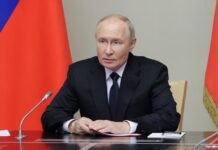‘Few will regret the passing of 2022. …It has seen soaring inflation and falling real incomes in a global cost of living crisis. It has seen rising interest rates, a strong dollar and widespread difficulties over debt: according to the IMF, 60 percent of low-income countries are in debt distress or at high risk of being so. It has seen falling asset prices and heightened volatility in markets. …It has seen the failure of the COP27 conference to bend the curve of emissions of greenhouse gases downwards. It has not even seen full recovery from the dire outcomes of the Covid pandemic, especially among the world’s poorest people.’- An excerpt from a recent The Financial Times published article ‘Glimmers of light in a terrible year’ by Martin Wolf
After almost two years since the start of the covid-19 pandemic, the early days of 2022 had shown the build-up of signs of a waning coronavirus onslaught and its mutations, and back then a couple of months into the global supply shock, all exposing the deep flaws in the globally dominant neoliberal policy framework, not to mention the main existential threat in the shape of climate change fast unfolding, it was no less than writing on the wall that to maintain life as we know it needed a ‘new normal’.
Apparently, it had become quite a dominant view point that the ways of greed, and ‘profit over people’ mindset, in an overall environment of market fundamentalism rule all, were not the sustainable and inclusive ways, that the proponents of Neoliberalism had so vehemently championed over the last couple of decades.
Yet, despite the realization that the world could not return to this neoliberal setting as the pandemic gave way to some semblance of a routine life, unfortunately the ‘new normal’ has continued to remain the main theme in major policymaking arenas in both individual countries, and overall, globally.
On the contrary, just into the last week of February, Russia invaded Ukraine, which accentuated the already difficult global supply shock; not only sending strong signals of famine, for instance, to a number of parts in Africa, but overall increasing the scarcity and price of mainly food and energy. At the same time, neoliberal policy still remains the dominant guiding post sadly, with not much progress made on regulation and overall greater role of governments in general.
A recent The Guardian published article ‘The pendulum swung against globalization in 2022 – and that’s no bad thing’ by Larry Elliott pointed out in this regard ‘This was supposed to be the year when things returned to normal. After the collapse of activity during the months of lockdown in 2020 and the supply bottlenecks of 2021, the hope was that 2022 would call time on an era of seemingly permanent crisis. It hasn’t quite turned out like that.’
On the contrary, apart from mainly a set of bright policy options presented under the ‘Bridgetown Initiative’, the same neoliberal, austerity, and procyclical policy mindset has continued to remain rampant during the current year. This policy needs to end immediately, mainly given the window of opportunity to meaningfully reverse the onslaught of climate change– especially in terms of limiting the rise in average global temperature, since the start of the Industrial Revolution, to remain below 1.5°C– is fast closing; under a number of scenarios there may not be more than a decade to achieve this goal. Hence, it is essential that 2023 should mark the beginning, and in a deep way, of a much-needed ‘new normal’
On the economic front, the same recipe meant that overboard monetary tightening for instance led to significant capital flight in developing countries, on one hand, and increased the impact of imported inflation at the back of stronger US dollar, and also because inflation reduction required a significant boost in aggregate supply that high cost of capital did not allow.
The unnecessarily high interest rates kept by developing countries in general, and in Pakistan specifically, firstly, in order to wrongly chase foreign portfolio investment (FPI) or ‘hot money’), rather than keeping the cost of capital low, and giving boost to exports, and allowing greater public investment and aggregate demand to attract foreign direct investment (FDI) instead. Secondly, the policy rate was significantly raised under a mistaken thought process that it was aggregate demand that was mainly responsible for inflation, when clearly the main determination of inflation was and remains aggregate supply shock, a strong dollar increasing the imported inflation component, and higher cost push inflation.
Overboard monetary tightening by the US Federal Reserve –a similar move made by many other major central banks globally, in addition to the same by a number of developing countries as indicated above –resulted in significant strengthening of the dollar, which increased external debt repayments on one hand, exacerbating the already difficult debt sustainability situation of developing countries like Pakistan, while high policy rate domestically added to these difficulties in terms of much greater domestic debt repayments.
So, on one hand, diminishing impact on foreign exchange reserves, making it difficult to service debt, and make necessary imports in terms of essential everyday items and also those used in producing exports, and on the other higher domestic debt repayments were squeezing already scarce fiscal space with developing countries.
For Pakistan, reduced fiscal space, in addition to high inflation, low economic growth, and in turn revenues further reducing the fiscal space, in addition to a difficult debt repayments situation, has brought all the more difficult choices in terms of catering the needs of millions of people who have lost their livelihoods –while a large number of people also lost their lives –in the wake of the catastrophic flooding; which cost the economy around $30 billion.
The unnecessarily tight monetary policy stance in a number of major Western capitals, meant that inflation– which was otherwise significantly determined by aggregate supply shock for although more so for developing countries, but also significantly for developed countries– remained at very high levels in the developed world as well during the current year. According to the same Guardian published article, Larry Elliott pointed out in this regard ‘For most western countries, 2022 was the year when cost of living pressures hit a 40-year high, prompting the US Federal Reserve, the European Central Bank and the Bank of England to slam on the brakes. Threadneedle Street’s monetary policy committee met eight times in 2022 and raised interest rates each time.’
A significant move towards a ‘new normal’ could have vociferously ushered in a move towards a non-austerity, and non-neoliberal policy, meaningfully incentivized a significant shift towards a much-needed green and resilient economic transition, catered to reducing income and wealth inequalities by making economic and political processes more inclusive– increasing in turn the impact of public opinion on public policy– and pushed towards decreasing poverty; where after for a number of decades before the pandemic, absolute poverty reportedly saw an increasing trend globally.
On the contrary, apart from mainly a set of bright policy options presented under the ‘Bridgetown Initiative’, the same neoliberal, austerity, and procyclical policy mindset has continued to remain rampant during the current year. This policy needs to end immediately, mainly given the window of opportunity to meaningfully reverse the onslaught of climate change– especially in terms of limiting the rise in average global temperature, since the start of the Industrial Revolution, to remain below 1.5°C– is fast closing; under a number of scenarios there may not be more than a decade to achieve this goal. Hence, it is essential that 2023 should mark the beginning, and in a deep way, of a much-needed ‘new normal’.























